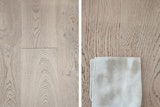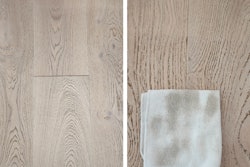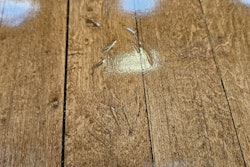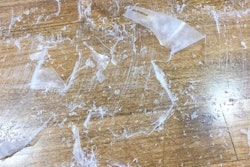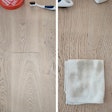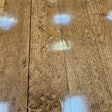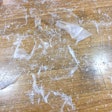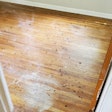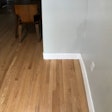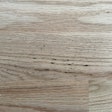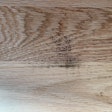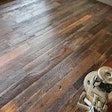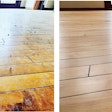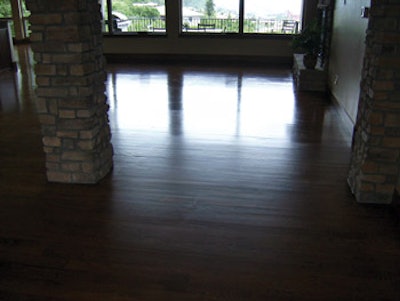
The Problem

The Procedure
The flooring was impeccably milled. The distributor had stored it properly and delivered it to the job site in time to ensure acclimation to its new and permanent environment. After the subfloor was prepped, installers nailed in the new floor. They did three passes with the big sander and edger, and then some screening with the buffer "clocked" going with the grain. They thought after they applied a little stain and finish they would be in the money … but not this time.
They applied one coat of penetrating finish stain and two coats of single-component satin water-based polyurethane. The next morning, some areas of the floor appeared almost gloss, while the hall appeared to be matte flat. The master bedroom area looked like semi-gloss.
The Cause
The contractor and his foreman had left the finishing to one of their newer crews. New to water-base finishes, this crew rolled out two coats of single-component satin water-based polyurethane as told. Being new to using water-based finishes, the idea of thoroughly shaking a finish seemed foreign to them, and almost reckless. Having used an oil-based polyurethane for years, they knew that if you shake that finish, bubbles and foam would prevent a nice, smooth finish application for hours afterwards.
But most modern water-based finishes contain really effective anti-foaming additives that prevent the foaming and bubbling the crew had feared. When the label directions encourage shaking, it is to ensure that all of the contents become equally dispersed prior to pouring the first puddle and line on the floor. This includes the flattening agents, which may settle while in inventory. Gravity isn't just a good idea, it's a law. When flattening agents aren't equally dispersed through the finish, the sheen won't be even on the floor, either, leading to exactly the problem they experienced on this job.
How to Fix the Floor
The floor needs to be screened well and recoated with finish that is mixed correctly.
In the Future
Sometimes when you do almost everything correctly-even craftsman-like-and drastically better than your lowest-price competitors, bad things still happen. The difference between getting paid by someone who's going to give you another enthusiastic reference and an unhappy customer is too often risked by being left to the least experienced of the team.
As contractors transition from oil-based polyurethanes to water-based coatings, it is important to recognize some key differences in the technology, read a few labels, and make sure everybody on staff is aware of the changes. Talk with your representative at your hardwood floor distributor and ask questions. Many features and benefits remain constant in comparison, but there may be a key difference or two. In this case, something as simple as knowing that water-based sealers and finishes can be shaken without risk would have avoided the extra trip and recoating. Time is money, and (even more so today) so is the gas to get there!










